Rare wood-pegged shoes
Wood-nailed or wood-pegged shoes, “holzgenagelte Schuhe” as they say in German, are rare, and fine wood-pegged shoes are very rare. Most shoemakers left, who can make them properly are in Austria. Among them Materna could be the number one. That is my impression.
Today master shoemaker Martin Dellantonio runs the shop in Mahlerstraße. He took over the business in 2008, when Materna himself, Georg Materna, retired. He had been the owner since 1973.
Wood-pegged shoes versus hand-welted shoes
All things being equal most shoe enthusiasts will rate hand-welted shoes above handmade wood-pegged shoes. However, in reality fine wood-pegged shoes will beat many hand-welted shoes.
I discussed the differences with shoemaker Benjamin Schwarzel, right hand to Martin Dellantonio at Materna. He admitted that in theory hand-welted shoes would be more durable, because you can re-sole them more times. On a practical level, though, you can have wood-nailed shoes for years like welted shoes, if you take care of them.
Benjamin Schwarzel also rejected the claim you sometimes hear that wood-nailed shoes will be harder to your feet than welted shoes. When well-made you will experience the same comfort in wood-nailed shoes as in welted shoes.
Are wood-pegged shoes more stable? I forgot to touch upon that with Benjamin Schwarzel. Some connoisseurs think that.
Wood-pegged shoes are three to four hours faster to make than hand-welted shoes, Benjamin Schwarzel told me.
Materna Shoes in Vienna
I got the impression that Materna has a lot of attention to the lasts. I don’t think they reach the level of Scheer but they definitely put more effort into the last making than, say the shoemakers in Budapest.
In terms of style Materna’s shoes follow a conservative Austrian tradition. You don’t see super narrow waists or long flat toes as you do on many bespoke shoes from Japan, Italy, France and sometimes even from England.
On the other hand Materna’s style is not clunky at all. It is just subdued compared to the current international Instagram fashion in bespoke shoes.
The start price at Materna for bespoke wood-pegged shoes or bespoke hand-welted shoes is 1650 euro.

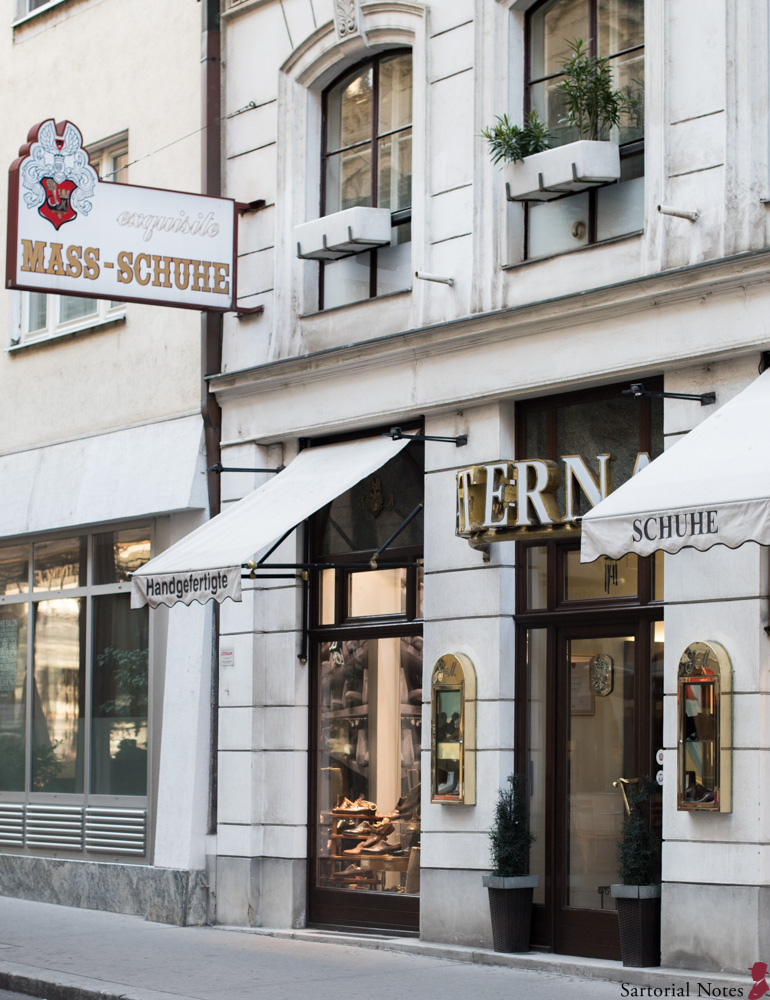
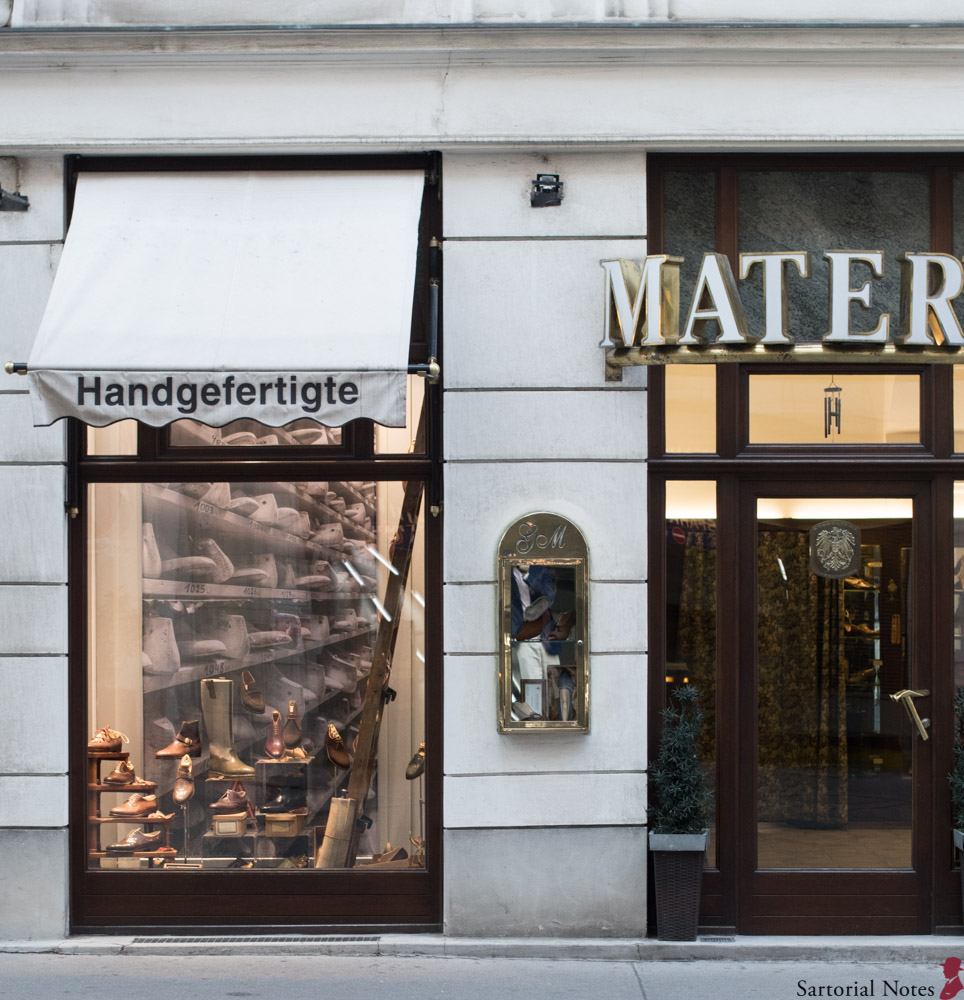
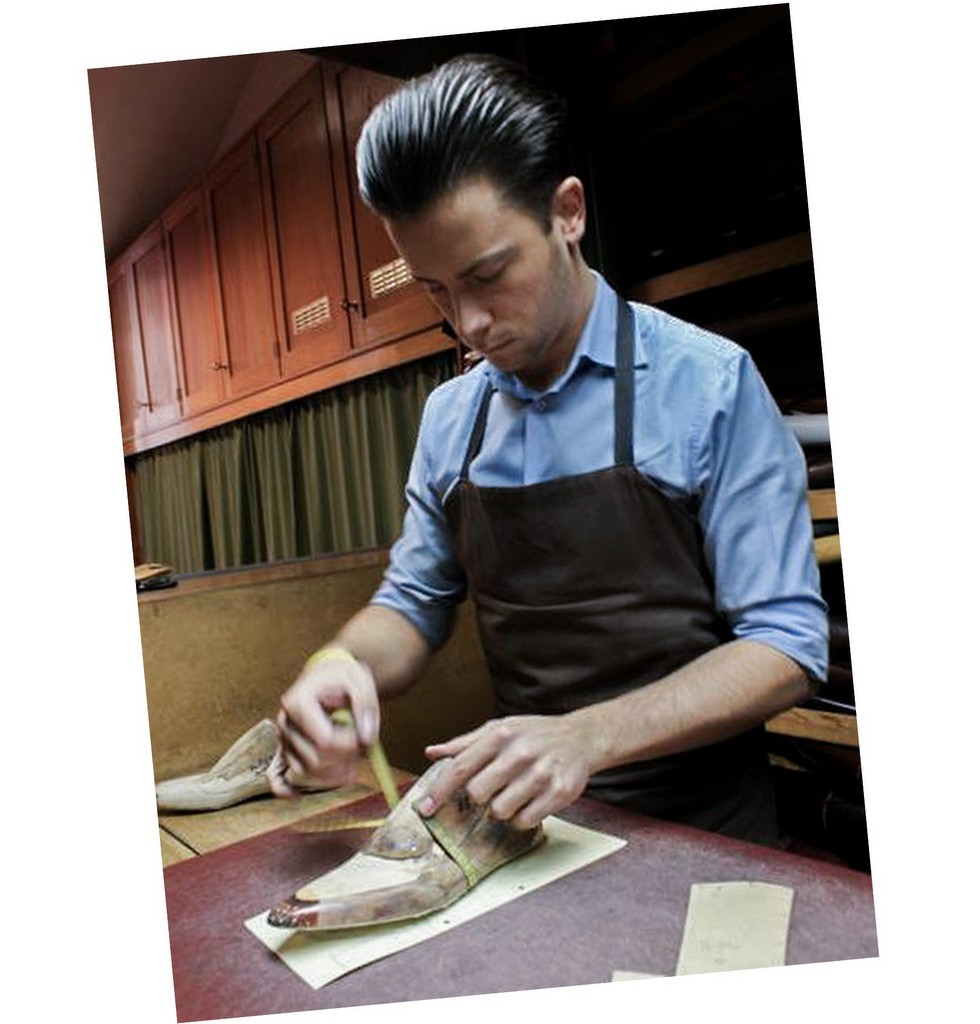
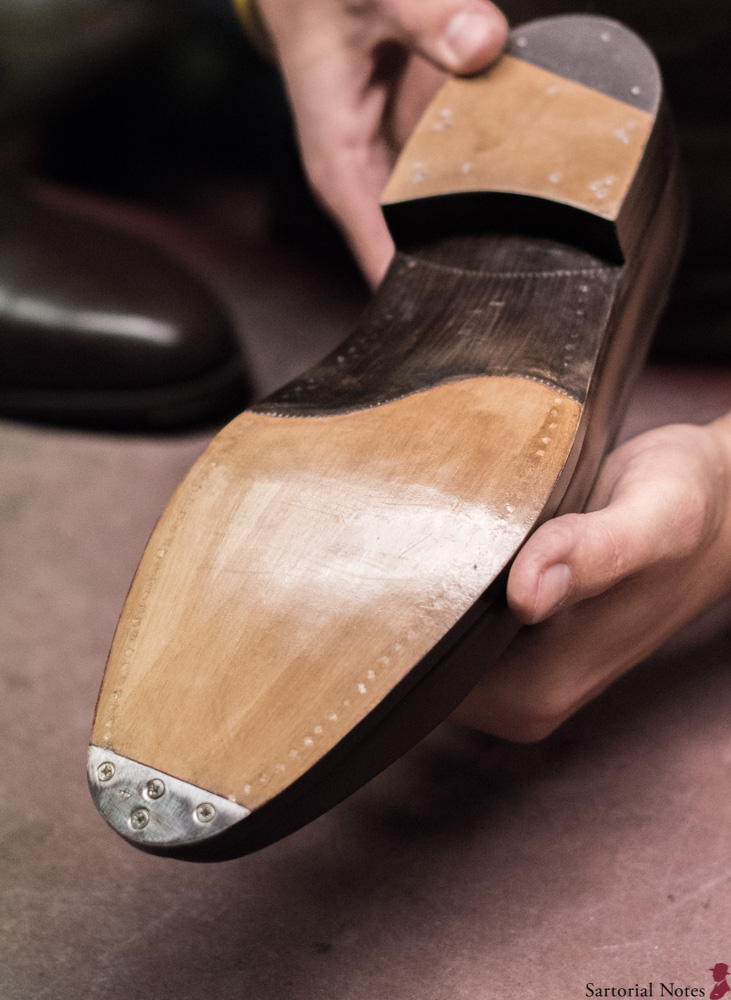
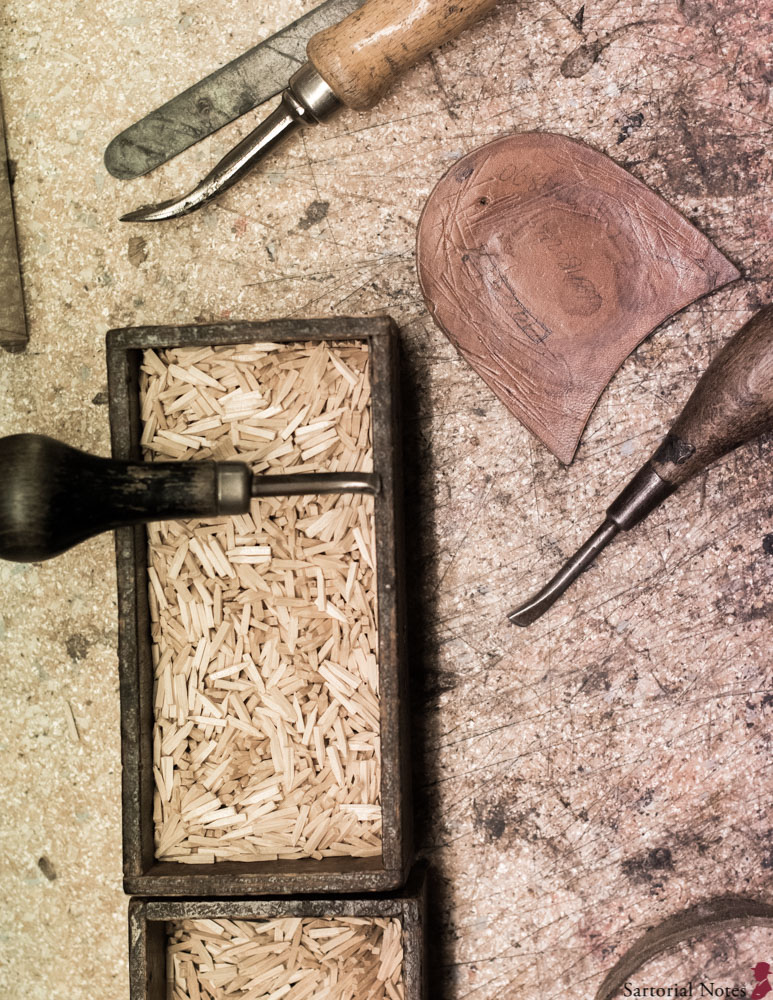
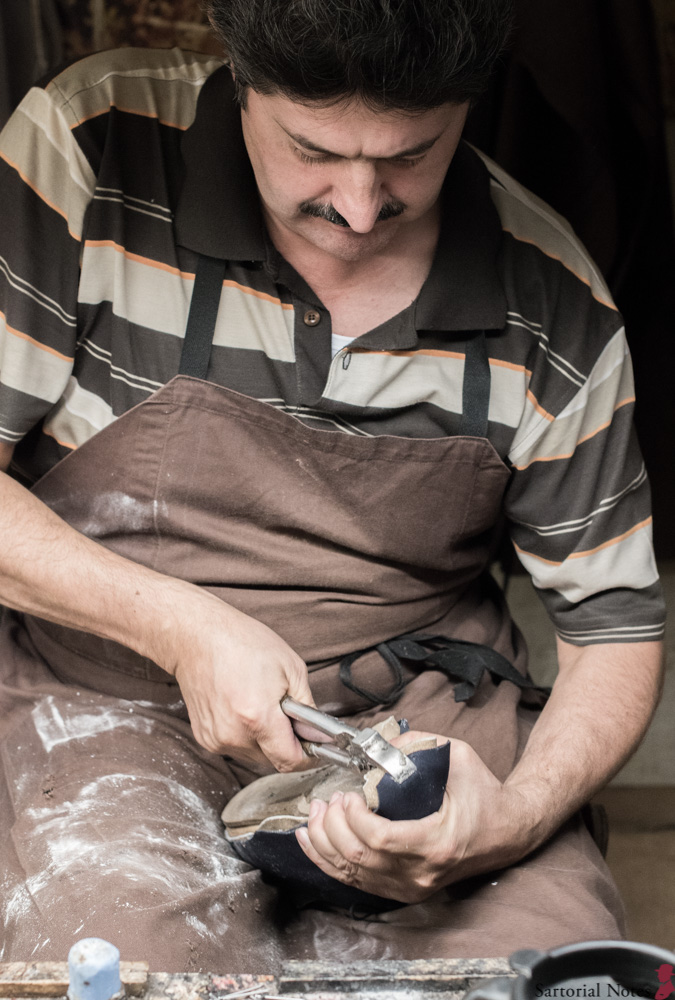
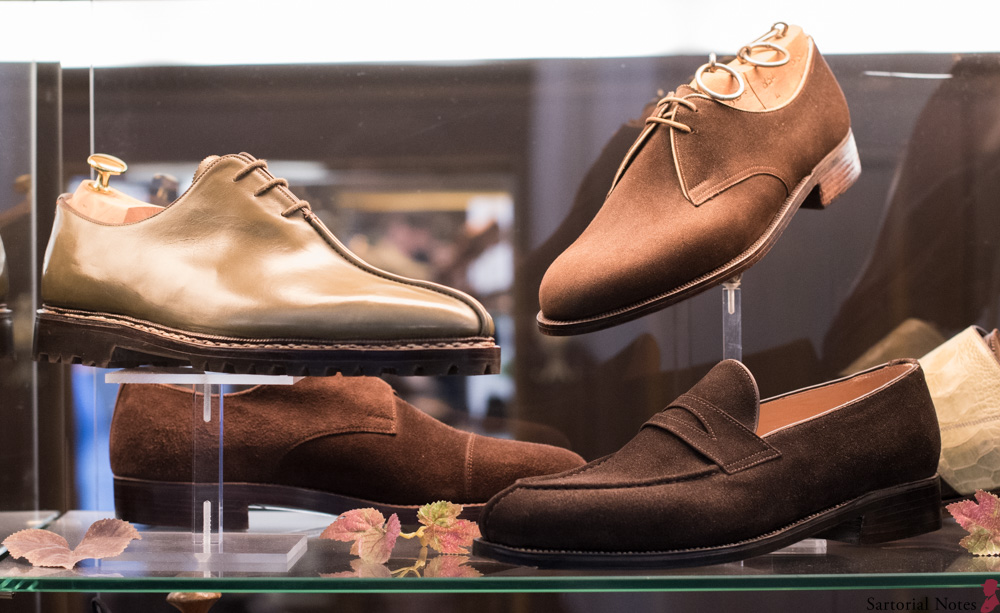
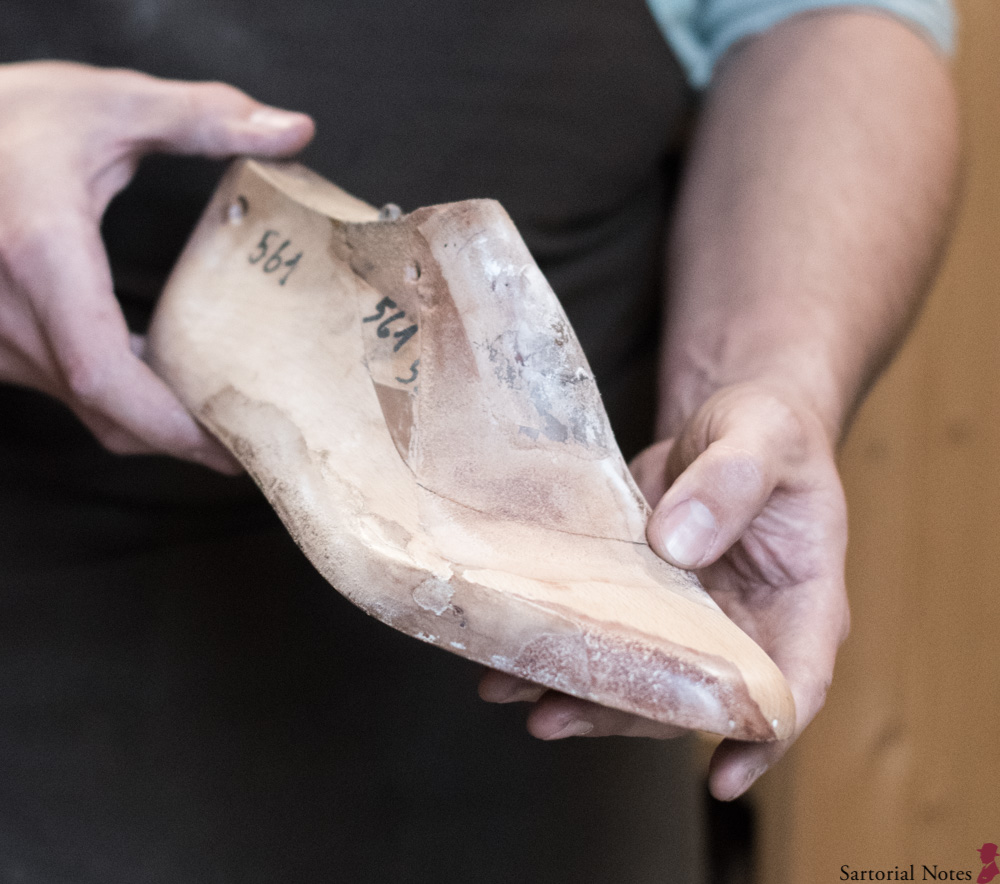
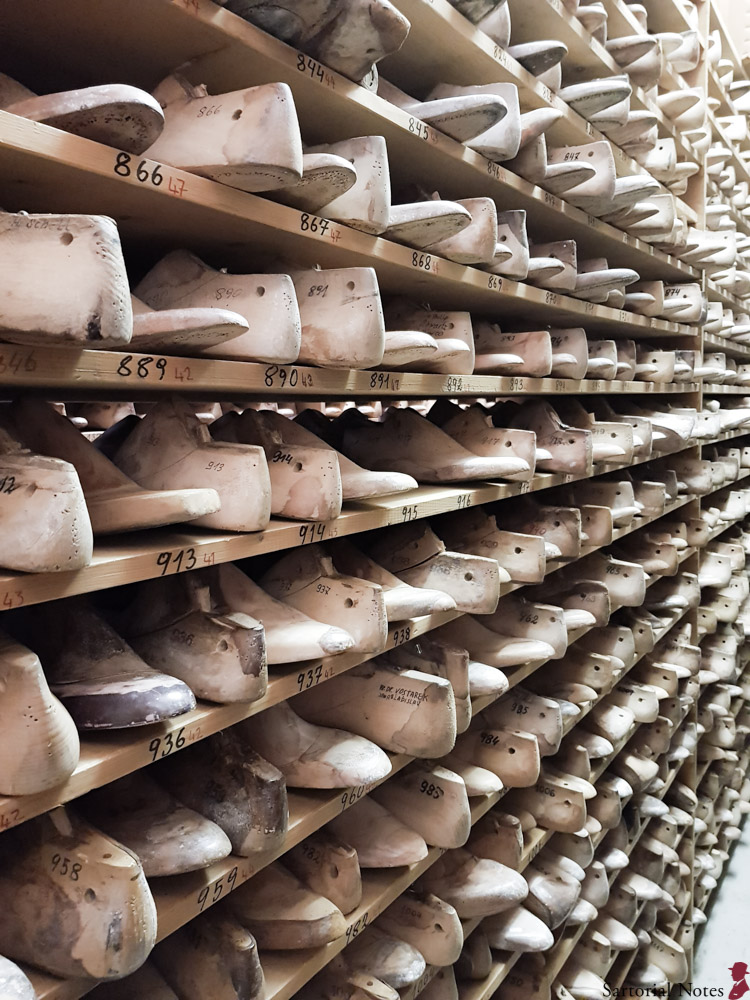
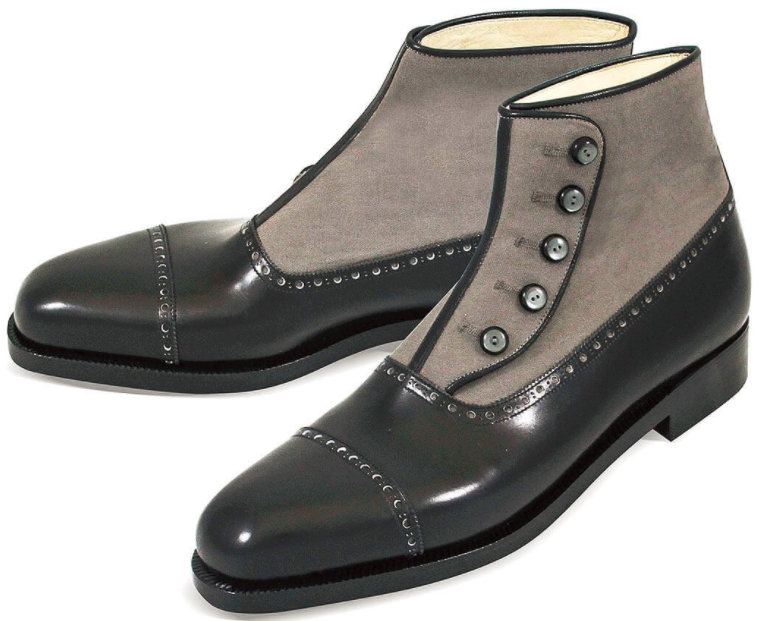
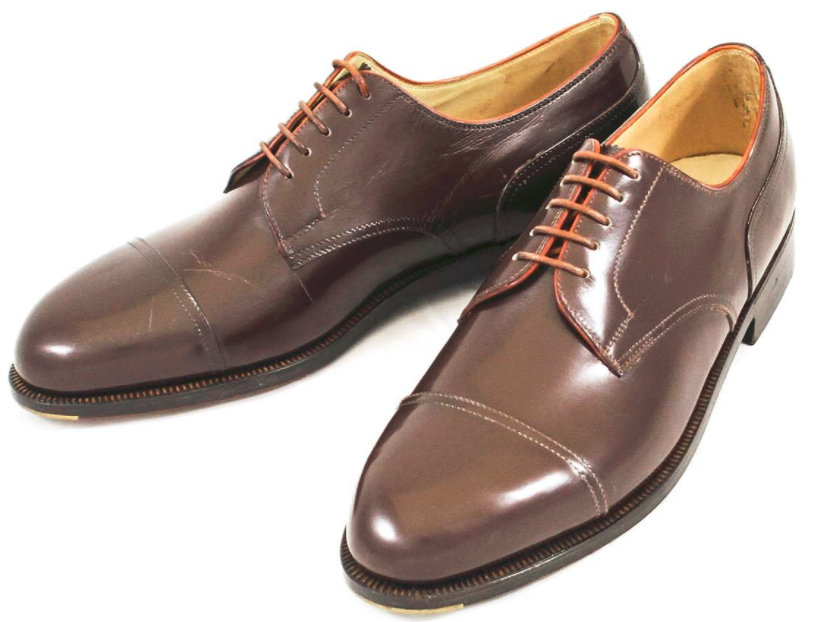

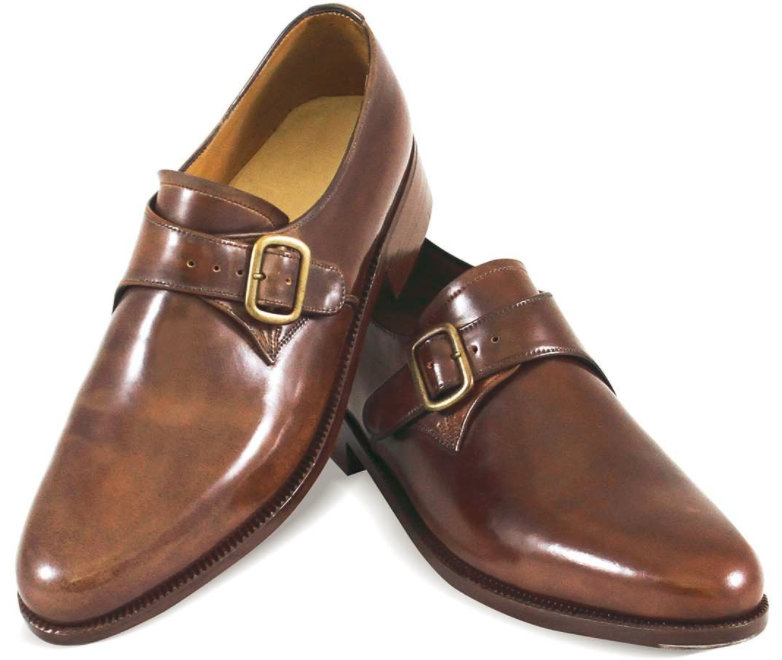
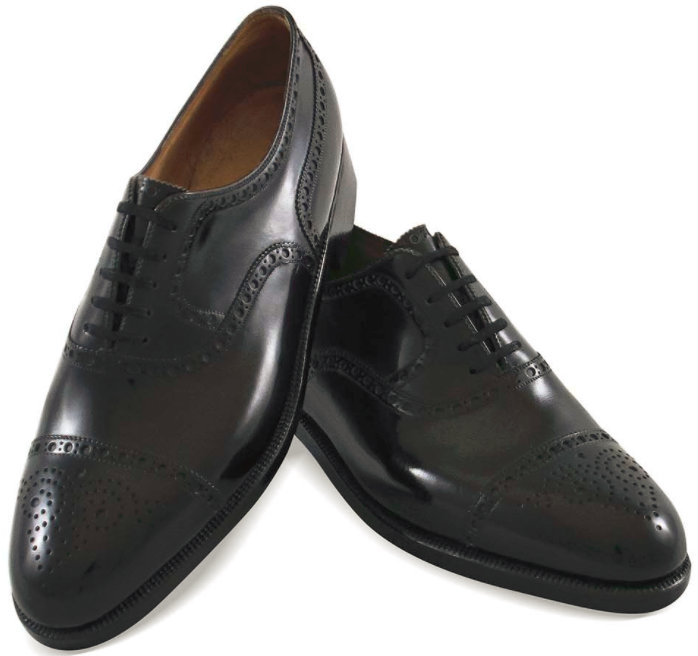
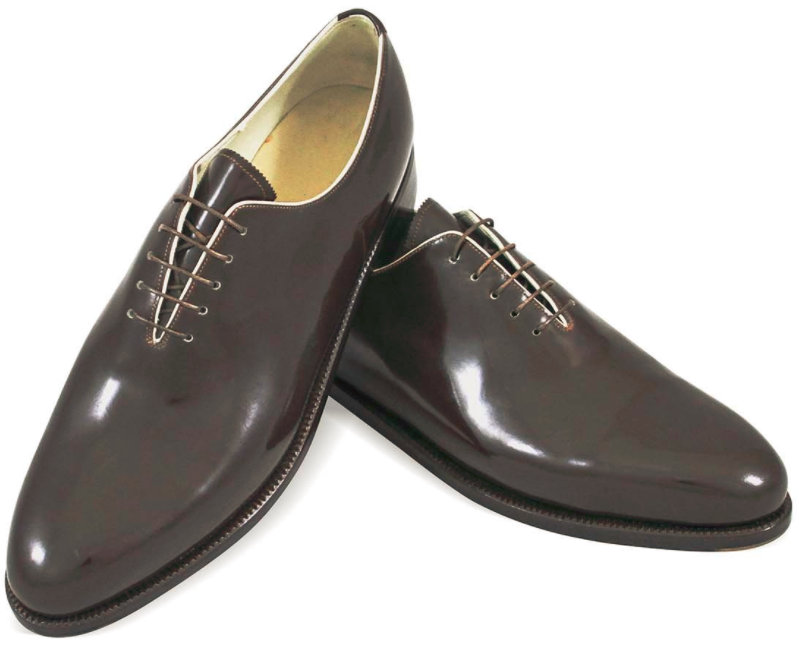
Thank you for an interesting article, Torsten.
While I respect the tradition from Central Europe and very much hope it will get more attention, the design often seems unadventourous and a little grandpa-ish, no? I do like the oxford brogue and monk pictured above, though.
What was your impression about the leather quality?
Torsten wrote: “Materna’s style is not clunky at all. It is just subdued compared to the current international Instagram fashion in bespoke shoes.”
So true 🙂
Austrian or Central European shoemakers in general are vastly underrated and I’m glad they are given a presence on here. The likeleyhood of Materna producing you better fitting and higher quality shoe than many of the English makers at half the price is extremely high. The overrepresentation of English bespoke is simply due to their presence in RTW and on the forums, all while they are willing to pay bloggers or “influencers” like Simon Crompton for their services.
The shoes by them are meant to be worn in conditions where your average English fiddlewaist will fail within hours. My wood pegged shoes have held up excellently during hours of walking on cobblestones, field paths, in the snow or even short hikes.
Concerning the style I would call them grown man’s shoes that you can find at many of the makers from Nothern Italy to Northern Germany. Not “insta”- fancy but well fitting on your feet and to your suit.
Parker, you wear wood pegged shoes in the snow? Forgive me, but doesn’t snow & salt affect the leather?
What makers would you recommend to start with, if one is new to Viennese tradition?
E.g. one reads a lot about Maftei, he even pays visits to Hamburg.
True, British RTW brands (C&J, E.Green etc) are omnipresent. However, I do not think London shoemakers are overrated in the fora. If I remember right, S. Crompton also had critical notes about the finish of their shoes.
As far as G&G is concerned, I know that D. Wegan – their shoemaker – is a humble, very dedicated and professional craftsman. But then he’s a Swede!
Did you know there’s even a Swedish scene of bespoke shoe-making (Jane Melkersson a.o.)?
I would certainly welcome more critical reviews of Austrian shoes 🙂
I’ve never had any problems myself, granted they are maintained very well. If you treat them with sole oil it will seal the leather and you’re perfectly fine. Well, I would’ve recommended Balint, but unfortunately they are no longer. Materna would be my second choice. The Maftei family are sort of omnipresent in the Viennese shoe scene with three different branches and their shoes are very nice considering prices and turnaround times. I only have one pair by them but I like it and it has aged beautifully. They are no Atienza or Scheer if you’re after the ultimate experience I suppose but they are a fantastic pieces of workmanship and attainable for the average customer. To me the best choice is always the one closest to you and that can provide the best results. If you have to travel (distances over 200km or not going there for work) to see a craftsmen this means additional costs and schedule troubles that should be avoided. Say you’re in Hamburg, Vauck and Kleeman are close by. They might be more expensive but again distance beats price.
Well, I never said they’re overrated just overrepresented and as a consequnce quite overhyped. The online style community has always been overwhelmingly British/American so their choices and preferences are dominated by what’s available to them. We in Europe have different possibilties available to us so we should mostly ignore their likings and recommendations. Why go to Savile Row when you have a decent tailor every in larger city in Germany?
I’ve paid visits to all of them and none have really convinced me. Added to that I’ve heard too many stories that Torsten wouldn’t want posted here to say that I would never consider an English bespoke shoemaker. To me most English bespoke has long become unattainable to the normal customer and is now a luxury product in line with an Hermes bag or a fur coat.
I’d take everything that Crompton writes with a massive pinch of salt, his recent post on Stileria Savoia illustrates this perfectly. The intransparency surrounding his arrangments with craftmen and companies should raise red flags with everyone. His stylistic choices are also an entirely different matter.
Yes I’ve heard of him. It’s good to see someone keeping a tradition alive.
Thank you very much for your elaborate answer, it’s much appreciated.
Parker wrote “To me the best choice is always the one closest to you and that can provide the best results.”
🙂
As to Mr. Crompton, he may get his commissions for free or to a reduced price. Two bespoke makers from London told me so independent from each other. Still I enjoy his writings. Although they may be biased, he maintains a certain critical approach. Also, readers are free to comment. He publishes all their comments.
The thing is, before the internet came to us, publishing was a costly affair. There was a reduced space available to a limited amount of topics: politics, economics, foreign affairs, culture/literature, and a little bit of lifestyle. That space was paid for, indirectly, by advertisements and to a lesser degree by subscriptions.
Menswear, yachting, hunting, cars, bicycles, etc etc etc were not considered as “serious” topics by any journalist in the pre-internet area as you may know, perhaps because a strict division between a critical approach and economic interests of the companies written about could not be maintained. And because these topics were considered of limited interest for a “general” audience. So they were the realm of specialized magazines, one more commercial than the other.
Then the internet came. Nowadays, anyone can start his blog about any topic he or she finds interesting and do it the way he or she likes. There are no printing costs any longer and publishing is for free. Consequently you’ll find blogs and now also instagram profiles, about a multitude of special interest topics. They’ve got more and more followers.
Now, maintaining a blog or even a consistent instagram profile must still involve some time, effort and a certain amount of costs in the long run. At the same time, commercial companies have found out that it’s easier to approach bloggers – now called influencers – than critical and often snobbish journalists. Thus a new publishing model has come into existence. It’s win-win for the blogger/influencer and the commercial company.
The good thing is: there’s a wealth of news about any special interest it’s updated almost every day and it’s all for free, isn’t it. What may have gone lost – and you realize that when looking at blogs like Grey Fox, Parisian Gentleman, Blue Loafers, Permanent Style – is the critical approach. That’s the price we pay for the abundance of topics. But honestly I do not think they’re driven by commercial interests as such. A genuine and authentic interest in the topic of menswear must get them going. That’s why I still enjoy all these blogs with some pinches of salt indeed.
In the mean time only very few bloggers have a journalistic background, have been trained in trying to find a kind of Truth for us humble readers and are still acting as a critical lawyer for us readers or potential consumers.
Please forgive me my elaborate comment. It’s been a pleasure to hear your comments and first hand experience with makers from Austria, thank you again 🙂